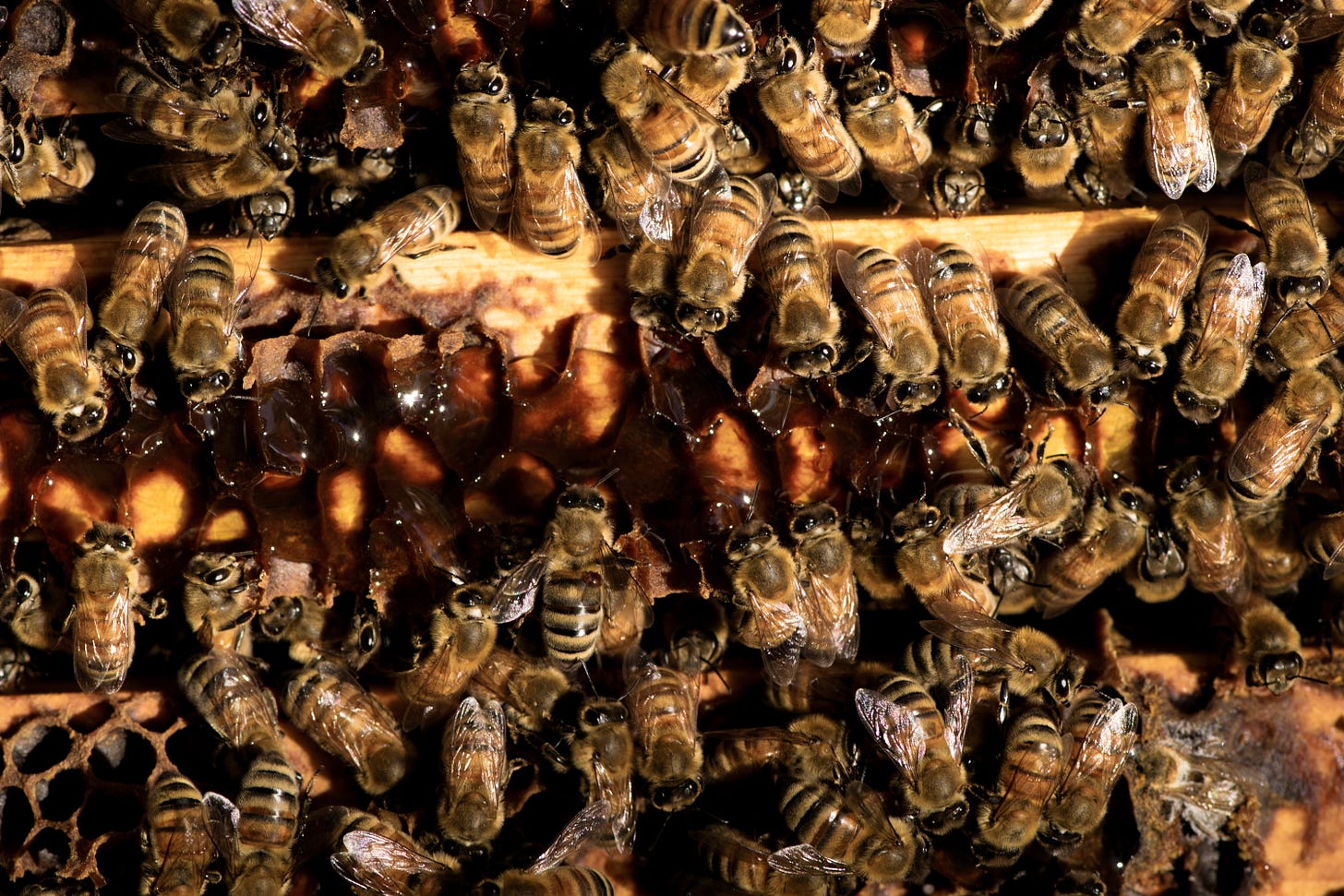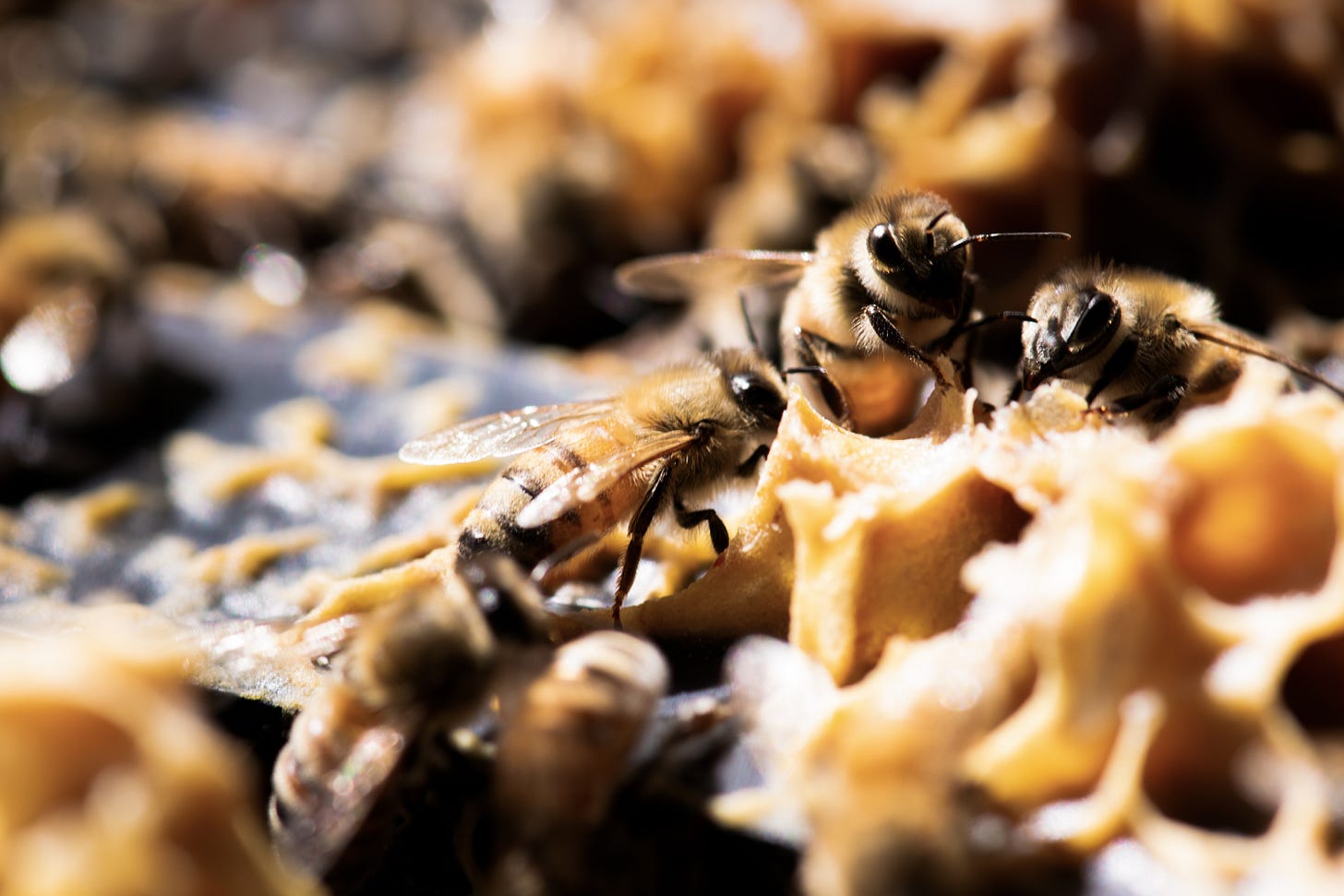Checking the hive
when the bees won't be left alone
We make plans to head off before it gets too hot but the day starts in such a lazy way it is 11 o’clock before we know it and you can feel the warmth of day building. Our task today is to check the hives in our country yards. Yesterday’s check of the town hives revealed presence of varroa mite so we need to see if the country sites require attention. To add to this it looks like it will be a low honey harvest this season based on what we are seeing and word with in the bee keeping community. The weather seems mostly to blame. Periods of rain hit when they manuka/kanuka were flowering which meant the bees weren’t inspired to leave the hive to forage. Now that the clover is ready we still aren’t getting the right combination of weather to see it yield either. It is such a different season to last and it is a reminder that bee keepers are always at the mercy of the weather.
I feel the heat building as I begin to work the hive. Sweat begins to pool and for a moment I stand, bees flying around me in a dabble light from the overhead silver birch trees and look at the absurdity of my situation. I am effectively standing in two sets of clothes on a 25 degree plus day. Because my bees suit is just another layer of fabric I am one of those cautious souls that wears jeans and a t shirt under my suit. I am reminded of the shock expressed by a friend I took out once to look through a hive and they realised that it was a just a layer of fabric protecting them from a sting. As I work we discuss what we we are seeing and note that population of the hive is, while strong, not booming for this time of year and we realise that the perhaps the bees have already decided the season is over and starting to slow down. I see the odd bee with deformed wing, which I always find a little heart breaking no matter how many times I see it. There is a pure beauty when you work a healthy happy hive and it is hard to see a newly hatched bee with out wings knowing they are not off to the best start in life.
So what causes this deformed wing? It is what is called a sign of PMS (no not that one) or Parasitic Mite Syndrome. PMS is a sign that you have the presence of varrora mite in your hive. This little red mite has changed bee keeping significantly. The mite attacks the young larva which means that it impacts new generations of bees coming through resulting in fewer healthier bees. This eventually reducing the number of bees to a level where the hive can not survive. As a result of the presence of varrora, we need to use a chemical treat to keep it under control. We had one season when we first started bee keeping about 10 years ago without Varroa, which would have been viewed as the traditional way to bee keep. Swarm season would end, the honey flow would start and you would slap on your honey supers, walk away and come back and harvest your honey. Our first year when we were new to all of this we followed suit and had enough success to feel that we were doing things as we should be. We could in a quiet voice call ourselves bee keepers. The next few years we learnt a lot. Varrora had moved into our beekeeping area and that first initial hit of varrora meant we were struggling to keep up and understand how to support our hives. In the intervening years we learnt how to manage the hives to keep varrora under control but here we are again, 10 years on, facing a mite that is increasingly becoming more resistant to treatments that have worked in the past.
We faces choices about how we approach this most requiring more research on our part. We reduced our number of hives this year in the hope that we might find the land we wish to live on and took having reduced numbers to try some new approaches. Some have worked. Some need work. We will keep on trying and we will keep on learning. We do find ourselves thinking wistfully of times when varrora wasn’t such a prevalent part of beekeeping and do worry about the future and how it will change how we beekeeping. It will require a much more hands on approach, a more nuanced approach. We will be required to pay more attention to our weather and the bees and that evil little mite.
*Storesthese are the boxes which we harvest honey from,







Gutted to read this, Mel. Can you recommend some reading as to the latest research on the mite? It all feels really worrying.